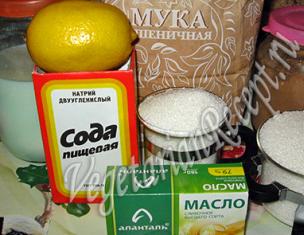Representatives of the Reformed Evangelical Church of the canton of Vaud, who gathered for a Synod last weekend at the Rumina Palace in Lausanne, agreed on how same-sex couples should be married. The regulation was adopted by 55 votes, with seven abstentions and three against. According to the proposed procedure, the ceremony contains some elements of a traditional wedding. It includes a solemn service and a sermon. The priest will remind registered partners of the ties that bind them and pray for the new couple. In this case, the pastor may refuse to perform the ceremony for theological reasons.
Unlike the traditional wedding procedure, the ceremony for same-sex couples does not include a blessing. A press release from the Reformed Evangelical Church clarifies that "the clergyman assigned to officiate will be careful to avoid confusion with the symbols inherent in the wedding." The new rite will appear in the Protestant churches of the canton on January 1, 2014.
The Synod made a decision to study in more detail the issue of introducing a special liturgical act for same-sex couples in 2012. At the last meeting, the details on which the new rite. The Reformed Evangelical Church of the Canton of Vaud will thus become the first French-speaking church in Switzerland to offer such a service to registered partners. It was still possible for same-sex parishioners to celebrate their union in nine churches of the Confederation, including the parishes of Bern and Friborg. In Geneva and Neuchâtel, on the contrary, such a procedure is not provided.
The model adopted by the canton of Vaud is a registered partnership. Let us recall that registration of homosexual couples in Switzerland became possible in 2007 thanks to the entry into force of the Federal Law “On Registered Partnerships between Persons of the Same Sex” (LPart). During the period from 2007 to 2011, 511 couples were united in the canton of Vaud, two thirds of which were men.
According to the Tribune de Genève newspaper, many Genevan homosexual couples would like to receive parting words from a pastor at the beginning of their life together. It should be noted that back in 1992, the issue of marrying same-sex partners was raised at a meeting of the Protestant Church of Geneva (EPG). Thus, priests pondered the fate of homosexual couples long before legislation on registered partnerships was adopted in the canton (in the early 2000s). The issue was raised for the second time by the Protestant Church in 2006, but then the financial difficulties that EPG was experiencing at that time became a priority. Thus, for now, Geneva gays have to turn to other denominations for blessings - the Evangelical Lutheran (American or German) and Christian Catholic churches, which provide similar services to their parishioners.
It should be noted that not everyone liked the decision of the Reformed Evangelical Church. Thus, the newspaper "24Heures" reports on the feedback received from EERV parishioners after the decision was made by the Synod. Some Protestants in the canton feel betrayed and are threatening to leave the church. However, the president of the EERV Synodal Council, Esther Gaillard, believes that negative reactions would have followed if the opposite decision had been made. “The issue is really very sensitive,” she says, noting, however, that in this case the dissatisfaction is primarily expressed by representatives of the evangelical wing. However, the changes that are taking place indicate that the Reformed Evangelical Church is trying to keep up with the times.
We think that the attitude of the Russian Orthodox Church towards same-sex marriage is well known to our readers. According to the chairman of the Synodal Information Department V. Legoid, “Orthodox believers, representatives of other traditional religions of Russia, many non-religious people oppose the propaganda of same-sex relationships. They are supported by many Christians, Jews and Muslims in the West, and some world media stubbornly try to create a picture that distorts reality ".
Prepared based on website materials
Rida KhasanovaMany couples strive not only to legalize their relationship in the registry office, but also to undergo the sacrament of wedding in church. But does everyone understand how serious and responsible this step is? After all, after the ceremony, the souls of the spouses will be together forever, even in heaven.
What is the sacrament of marriage?
The sacrament of wedding is a sacred rite. Its meaning is that two people bare their souls to themselves, to each other and to God and enter into a marriage that recognized not only on earth, but also in heaven.
What is the difference between a wedding and a wedding: the first is the conclusion of a legal marriage announced before society. And the second is people's desire for unity, to create conditions in marriage where love and faith will only strengthen.
The wedding usually takes place in a church, but if desired, an outdoor ceremony can also be organized, although it will not be particularly solemn, as in a temple
Where to start preparing for the wedding: first of all you need come for permission to the priest. Father will explain the essence of the wedding, which is an Orthodox tradition. You shouldn't go through a ritual just to get beautiful pictures or because “it’s necessary.”
Basic rules for those who have decided to get married:
- husband and wife must be baptized;
- a man and a woman must be married, registered in the registry office;
- Before the ritual you need to go to confession and take communion.
What you need to know for those who, for whatever reason, decided to undergo a wedding ceremony abroad:
- a wedding held in another country will be recognized as legal in the homeland;
- a Christian wedding can only be held in a Christian country;
- For a wedding abroad, you will need a baptismal certificate, birth and marriage certificate (depending on the country, the list of documents may vary);
- Documents for consideration are submitted no less than a month in advance.
A wedding is only an external ritual, without sincere love and understanding why this ritual is needed, it will not have true meaning. First you need to honestly admit to yourself whether there is willingness to share with your spouse all the joys and sorrows, life’s difficulties. Wedding couples receive great support from the Almighty, but efforts to maintain and strengthen relationships must be made by themselves.
23 Sep 2018 at 4:25 PDT
People often wonder whether an unmarried marriage is fornication - if a man and a woman love each other, are faithful in their relationship and have registered it in the registry office, then they have the right to turn to the wedding when they consider it necessary.
The whole truth is that a righteous life in an unmarried marriage cannot be considered wrong or sinful, and is recognized by the church
There is a misconception that marriage can be debunked. The bishops are meeting the requests of spouses who have separated and are already in relationships with other people, so that they do not fall into even greater sin.
Therefore, to the question, how many times can you get married, the answer is clear - one, - things are incompatible. If such a need arises, how to get married a second time? Need to submit. Only the highest priest, the diocesan bishop, can do this. He looks at the situation and allows chance for a new marriage. The answer may be negative if a person has violated the vow of fidelity made before the Lord.
How does a wedding take place and what is needed for it?
- the back, shoulders and chest should be covered; if the dress is open, then you should take care of the wedding cape;
- the dress should not be too tight or short;
- It is better to choose shoes with low heels, since the wedding lasts about an hour;
- the head must certainly be covered with a scarf or veil;
It is important to note that guests must also be dressed in accordance with the rules. Revealing clothing and trousers on women are not allowed
The priest before the wedding in the church appoints a fast for the newlyweds: It may take several days or a week. During this time, you should avoid going to parties, eating meat, and intimate relationships. It is advisable to fill it with reading spiritual books, prayers and attending services in the temple.
‒ there are some days of the year when this is prohibited:
- all main 4 posts;
- the period between Christmas and Christmastide;
- Easter and cheese weeks;
- eve of great holidays;
- the day of the Exaltation of the Cross of the Lord, the Beheading of John the Baptist, as well as the eve of fast days - Tuesday and Thursday.
Orthodox and Catholic Church are close to each other, but still there are several differences, including in the wedding ceremony:
- visiting the church is required 3 months before the wedding for a kind of education about marriage according to Catholic rules;
- children born in marriage must be raised in the Catholic faith;
- special permission is required if people of different faiths are getting married (Jewish, Muslim or with an atheist);
- In the Catholic Church you can get married on any day, even during Lent.
How to get married in a Protestant church - the sacrament is very similar to the rite of a Catholic church. Both the preparation and the process itself are almost identical to each other. The main difference is that at the beginning of the process, the bride enters the church alone or with her father, and the guests and groom are already waiting for her.
Eat interesting rule: Alcohol is prohibited at Protestant weddings. As a last resort, you can allow light wine or champagne, but no more
After the opening prayer, the priest asks the newlyweds whether they really agree to get married, and also asks the parents whether they bless their children.
In a Protestant church you can go right into the church: instrumental music, Christian songs are played, guests bring donations to the church, and also receive communion.
You cannot get married in a monastery - this is stated in the charter Orthodox Church. After all, in this place live people who renounced everything worldly, and neither weddings nor baptisms are held in the monastery.
Signs and superstitions associated with weddings
Wedding has always been of great importance to people, since previously it was considered the official conclusion of marriage. But now only those couples who have registered their relationship with the registry office can undergo this ritual. Despite this, they are still respected various superstitions.
Signs about wedding clothes:
- if a girl puts on a wedding dress before the Sacrament, it may not take place;
- before going to church you need attach pins to the clothes of the bride and groom to protect yourself from the evil eye;
- If during the ceremony the bride drops her scarf, it means she will be a widow.
Signs associated with the road to wedding:
- when the bride leaves for church, the parents need to wash the floor in the house (except for the threshold) so that the wedding does not get upset;
- before leaving for church, you are supposed to put a lock under the threshold of the house, when the young people cross it, lock the lock with a key, and throw the key away as far as possible (the lock is kept for life);
- you need to go to church one way, and back – another;
- For newlyweds going to the wedding, no one should cross the path.
The parents of the newlyweds should not be present at the wedding; they are replaced by godparents. And the relatives, mother and father, remain at home to bless and then meet the married couple
You also need to pay attention to wedding candles, which have great power:
- whose candle burns out more during the Sacrament, that of the spouses will be the first to die;
- wedding candles should be kept for life, they can also help during difficult childbirth;
- If there is a strong crackling sound from the candles during the wedding, it means that the couple’s life will be troubled.

Wedding candles
During the wedding, the spouses swear before God that they will be faithful to each other all their lives - this is an extremely responsible decision. You need to agree to a church sacrament only when loving people truly confident in their feelings. You cannot treat this ritual as fashion - otherwise nothing good will come of it. It is better to first live for some time in an ordinary marriage and become convinced of the seriousness of your intentions.
For clarity, watch the beautiful video of the wedding:
July 28, 2018, 10:05
Wedding plays vital role in the life of representatives of the Catholic Church. This Christian rite has been known since the 4th century AD. The concepts of “marriage” and “wedding”, in contrast to Orthodox tradition, are actually identical to the wedding ceremony, therefore, along with the high responsibility of those who decided to go through betrothal in the church, the preparation for the celebration is also very strict.
From the point of view of the Catholic Church, a sacrament is characterized by:
- holiness- connecting two people with God;
- unity- joining spouses into one;
- indissolubility- the eternity of the marriage union even in the afterlife; Divorce is possible in very rare cases.
Interesting! In Christianity, the family, that is, the church union of a man and a woman, is called the “small” or “domestic church.”
Terms and Conditions
To adequately prepare for the wedding ceremony, future spouses must meet several conditions:
- contact the clergyman of the parish where they intend to conduct the marriage ceremony 3 months before the wedding;
- be in an officially registered marriage;
- undergo special pre-marital preparation.

You need to know the basic prayers and rituals of the Catholic Church:
- "Our Father";
- "Symbol of faith";
- "To the Virgin Mary";
- gospel commandments;
- 6 truths of faith;
- 5 church commandments;
- "Angel of the Lord";
- Holy Rosary;
- order of baptism;
- church sacraments;
- preparing the home for the sacrament of the sick;
- 5 conditions for the sacrament of reconciliation.
Preparation
At the first meeting with the priest, the newlyweds (they are also called the betrothed) agree on the procedure for taking special pre-marital courses to get acquainted with the Catholic foundations of marriage, family, and the role of spouses in raising children.
Thus, the Catholic Church is categorically against the use of any contraception and considers this a great sin. Only the physiological method of planning the birth of a child is acceptable.
The need for active participation in the life of the church, observance of Christian commandments, and introducing children to the faith is discussed. Usually there are 10 such conversations.
Interesting! In the Catholic tradition, there is a custom, that is, young people notify their family and friends of their intention to marry.
The bride and groom must prepare and undergo the sacraments of confession and Eucharist (communion), which are preceded by fasting. 
Betrothal of young people of different faiths
The most common situation is when both spouses belong to the Catholic Church. In this case, there are no canonical obstacles to marriage. But it happens that one of them is a representative of another religion. In this case, there are a number of peculiarities during a wedding.
Catholic and Orthodox or Protestant
If one of the betrothed belongs to another Christian denomination (Orthodoxy, Protestantism), then permission for such a marriage is given by the bishop of the corresponding diocese.
Important! Catholicism also recognizes as legal marriages performed in the Orthodox Church.
The newlyweds make a promise to raise their future children in the Catholic faith. Information about the married couple and the signatures of the spouses under such a promise are entered in a special form. 
Wedding with an unbaptized person
If one of the spouses is unbaptized (atheist, Jew, Muslim, Buddhist), that is, does not belong to Christianity, then obtaining permission from the bishop becomes much more difficult.
There is no canonical ban on such marriage, but each case is considered individually. The clergyman talks with the newlyweds about the difference in cultures and the possible difficulties of such a union. The final decision rests with the bishop.
The right time
The sacrament of wedding according to the Catholic rite is performed almost all year round. The spouses themselves usually prefer to get married outside of fasting days, but there is no direct prohibition on this.
When getting married during Lent, you should not arrange a loud celebration after the ceremony with many and noisy feasts. 
Prohibitions on weddings in churches
The performance of the sacrament of wedding is prohibited in the following cases:
- those intending to enter into a church marriage are relatives (father and daughter, brother and sister) or half-brother and sister;
- one of the possible spouses is already in a church marriage;
- the physical impossibility of one of the spouses to perform marital duties, but infertility is not an obstacle to participation in the wedding;
- the murder of a husband or wife by one of the spouses for the sake of entering into a new marriage;
- the intended ones are cousins (theoretically, such a union is possible with the permission of the bishop, but in practice it is issued in exceptional cases);
- one of those wishing to marry is a clergyman or monk (nun).
Even if the wedding sacrament was performed, and the circumstances listed above later became clear, the ceremony is considered invalid. 
From the point of view of the Catholic Church, marriage is indissoluble. A marital union can only be terminated by the death of one of the spouses. In the Catholic Church, unlike the Orthodox Church, there is no possibility of debunking. After a divorce (without a previous wedding), you must provide a certificate of divorce.
Documentation
To the first meeting with the clergyman before preparing for the ceremony, future spouses must bring the following documents:
- passport;
- baptismal certificate;
- Marriage certificate.
The last document that is issued after completion of preparation is a certificate of completion of special courses for newlyweds.
Ceremony in the church
There is no strictly regulated ritual order that is uniform for all dioceses. It may vary depending on the area and the priest who performs the wedding. However, a number of characteristic details still exist.
The ceremony is performed by a clergyman. In special cases, he can be replaced by a pious layman. 
Start
Usually the wedding ceremony takes place in a church. Usually, the bride is brought to the altar by her father or another man who has taken upon himself the responsibility of caring for her(uncle, older brother). They are followed by little girls who scatter flower petals from a basket. At this time, the groom with witnesses and other guests is waiting for his future wife in the temple.
Less often, newlyweds enter the church together, holding hands. The bride is not required to wear Wedding Dress, and the groom - a suit. All that is required is the observance of neatness corresponding to the solemnity of the sacrament. At the altar, the betrothed stand or sit on special chairs with cushions.
Catholic tradition suggests mandatory participation witnesses (up to three people on each side). Witnesses may belong to any Christian denomination. Bridesmaids often wear matching dresses. A special role is given to a little girl from among the guests, who is dressed up in a wedding dress. It symbolizes the purity, purity and spirituality of the future marriage union.
Liturgy

The wedding ceremony is preceded by a liturgy, after which the priest reads small fragments from the Bible and delivers a sermon on the importance of church marriage, the role of each spouse in the family, and the need for careful upbringing of children.
Then the couple getting married has a conversation with the clergyman, during which he asks the future spouses questions about the presence of any obstacles to getting married:
- Did you come to the temple voluntarily, and is your desire to enter into a legal marriage sincere and free?
- Are you ready to remain faithful to each other in sickness and in health, in happiness and in misfortune, until the end of your life?
- Do you intend to lovingly and gratefully accept the children God sends you and raise them according to the teachings of the church?
These questions make it possible to verify the sincere and free desire of the young people, their Christian view of the sacrament of wedding and family ties.
Vows and engagement

If the couple answered affirmatively to all questions, the priest asks the Holy Spirit to descend on the spouses. They offer each other their hands, which the priest ties together with a ribbon. Then the newlyweds, standing face to face, read their marital vows and take a vow of fidelity. The groom does this first, followed by the bride. They often complement them with their own words of love and gratitude to family and friends.
Interesting! Previously, in the Catholic Church there was a custom to decorate the temple gates with metal ringing objects to attract good luck to the future family.
After the oath, the groom's main witness hands him the wedding rings, the groom puts the ring on the bride's ring finger, and she puts the ring on the groom's. 
The priest says the Lord's Prayer, the Intercessory Prayer and blesses the newlyweds. Newly-made spouses sign in the church register. Wedding rings are not a mandatory attribute of a wedding in Catholicism.
If they are available, the clergyman conducts the consecration ceremony. Rings are an addition to the ceremony itself, which symbolize the fidelity of the newlyweds and their receipt of grace.
In most Catholic countries: France, Slovenia, Croatia, Czech Republic, Italy, Slovakia, the ring is traditionally worn on the ring finger of the left hand. A wedding ring is worn on the right hand in Poland, Austria, Spain, and Argentina.
The entire sacrament of wedding takes about half an hour.
Useful video
- one of the most beautiful, important and tender sacraments. To visualize the beauty of the Catholic rite, watch this short video:
The wedding ceremony occupies a special place in the life of Catholic believers, because it is held only once in a lifetime. Knowledge of all accepted traditions allows you to conduct this sacrament in accordance with the church canon and make it special.
In Catholicism, it is also customary to solemnly celebrate the first anniversary of marriage. The spouses take part in the liturgy, celebrate the sacrament of the Eucharist and re-pronounce their vows.
10 minutes
usefully
Reading time:
10 minutes
Preparation time:
5 o'clock
3000%
i.Concentration:
This scenario is a classic Christian wedding ceremony of a young couple into a family union in the face of the Lord God in the presence of parents, guests and witnesses.
The ceremony is based on the unchanging biblical principles of self-sufficiency and the inviolability of the marriage union of man and woman, and is still performed today in evangelical churches around the world.
The ceremony includes elements such as pledges of fidelity by the newlyweds, exchange of rings, prayer of blessing, gratitude to parents, and proclamation of the marital union.
Sincerely, Ivan and Oksana Privalov
Grand entrance
– parents;
– pastor, groom and witness;
– witness;
– boy with rings;
– girl with rose petals;
– the bride’s father brings his daughter to the altar.
Introduction:
The pastor prays a prayer of thanksgiving.
Dear newlyweds, if you have seriously and prayerfully considered the step ahead of you and willingly and reverently wish to enter into a marriage union in order to be united in everything until death, please join your right hands. Ivan , in the presence Almighty God and the witnesses gathered here, do you promise to love, appreciate, respect Oksana standing next to you, right hand
which one are you holding?
Do you promise to take care of her in sickness and in health, in joy and sorrow, in prosperity and need, in youth and old age?
Do you promise to be faithful to her until death? Oksana
, in the presence of Almighty God and the witnesses gathered here, do you promise to love, appreciate and respect Ivan standing next to you, the right hand whom you hold?
Do you promise to take care of him in sickness and in health, in joy and sorrow, in prosperity and need, in youth and old age?
Do you promise to be a faithful and devoted wife to him until death?
May the Lord bless you in your steadfast promise!
Brief Instruction The union you are entering into is the most tender of all..
human relations
– Instruction for the Husband [Ephesians 5]
- advice for the wife
- instructions about love
– Advice to Parents [Matthew 19:5]
Groom's promise:
I promise to love you, care for you, and be faithful to you until the coming of our Lord Jesus Christ or until the day when the Lord does us part by death.
Bride's promise:
I promise to love you, care for you, and be faithful to you until the coming of our Lord Jesus Christ or until the day when the Lord separates us by death.
Exchange of rings:
Since ancient times, the ring has always been used in important events. A wedding ring is a symbol of marriage - made of precious metal, the ring is a perfect circle that has no beginning or end.
It denotes your desire, our desire and God's desire that there be no end to your happiness and your love in your married life.
It denotes your joint desire to have endless love for each other, with God's help. Therefore, whether you are together or apart, let these rings be a constant reminder to you of the promise you are making today.
The witness takes the rings from the baby and gives them to the pastor.
Groom:
With this ring I seal my promise to be a loving and faithful husband. God is my Witness.
Bride:
With this ring I seal my promise to be a loving and faithful wife. God is my Witness.
Pastor:
Giving and accepting these rings as a symbol boundless love, purity, devotion and dedication, you are united in marriage.
Your solemn promises are sealed with this symbol and the Word of God forever.
Drinking the “Cup of Life”:
By entering into a marriage, you agree to go through and overcome many everyday difficulties together. As a symbol of your unity and readiness to endure all the hardships of life together, I ask you to drink from one cup this is the juice of the grapevine.
Let this simple act become the first act of your life together.
The bride and groom take turns drinking grape juice.
Prayer:
- Bride
– Parents of the groom
– Parents of the bride
– Pastor
Parents' thanksgiving:
Beginning life together and leaving the house of their parents, the young people wished to express their gratitude to their parents, who raised and raised them for each other.
The newlyweds give their parents valuable memorable gifts and bouquets of flowers.
Announcement by husband and wife:
As a servant of God, by the authority given to me by God, I declare you husband and wife, united in purpose, intention and happy life.
What God has joined together, let no man separate.
Confirm your union with a kiss...
Performance:
Dear friends, brothers and sisters, let me introduce you to Oksana and Ivan Familia, legally married husband and wife.
May the grace of our Lord Jesus Christ and the love of God the Father and the communion of the Holy Spirit be with you all.
I invite, first the parents, and then all the guests, to congratulate the newlyweds on their wonderful decision!
– theologian, publicist; site administrator Uucyc.ru [since 2000]; Head of Children's Olympic Games, Kyiv ; leader of youth and teenage movements; founder of the “Living in Truth” movement.
The founding fathers of Protestantism began their activities by denying the symbolism of traditional churches: icons, sacraments, magnificent services and holidays. What is Protestant worship? Do Protestants now have sacraments, do they celebrate anything? Let's try to answer these questions.
From the editor: For a better understanding of the essence of Protestantism and numerous Protestant denominations, we recommend that you read the article
Divine service
What does Protestant worship consist of? From singing church hymns, praying together, reading Holy Scripture and sermons.
Are there any denominational specifics to worship services? Quakers have extremely simple worship. There are no hymns sung, no sermons read, no set prayers. Anyone who wants can speak based on their life experience. This is called “spoken service,” “verbal shepherding.”
Pentecostal worship is sometimes accompanied by glossolalia. In a number of American and Latin American charismatic communities, in connection with the doctrine of the spontaneous action of the Holy Spirit in the church, expressive manifestations are accepted during worship.
Elements of the Catholic service were preserved by Anglicans and Lutherans. Thus, during worship, parishioners sit on chairs or benches, rising (or sometimes kneeling) only during prayer or at the most important points liturgy. Candles, incense, and the presence of an altar have been preserved.
Is Protestant worship regulated? Lutherans and Anglicans serve according to special missals; in the New Apostolic Church, the order of worship is determined by the highest church leadership. In all other denominations there is an established order of worship, the content of songs and sermons is determined by the leadership of the community. Quaker worship is fundamentally spontaneous.
Do Protestants have icons? In principle - no. But Lutherans and some other denominations allow the presence of paintings, frescoes and stained glass windows depicting biblical subjects in churches.
Is there music at Protestant worship services? Lutherans and Anglicans use an organ during services; the Amish do not allow music. All other churches use different musical instruments.
A number of evangelical and charismatic communities have adopted rock-style worship (sometimes even rap and metal).
Sacraments
Do Protestants have the concept of “sacrament”? There is, but it is understood more as a simply symbolic action. Quakers, the Salvation Army, and Unitarians do not have the concept of “sacrament,” and baptism and communion are not required.
How many sacraments do Protestants have? Seven are among the Anglicans; they recognize all the same sacraments as the Orthodox and Catholics (baptism, confirmation, repentance, communion, consecration of oil, the sacrament of marriage and priesthood). Three - in the New Apostolic Church (baptism, sealing with the Holy Spirit, communion). All other denominations recognize baptism and communion as sacraments (in some cases simply symbolic actions bequeathed by Christ), and other ceremonies as only rites.
Baptism
Who can Protestants baptize? A person who consciously professes faith in Christ or (in those churches where the baptism of children is recognized) children of believing parents.
Do Protestants baptize children? Anglicans, Lutherans, Presbyterians, Congregationalists, Reformed, Herrnhuters, Methodists and the New Apostolic Church practice infant baptism. Hutterites, Baptists, Dunkers, Adventists, Disciples of Christ (Church of Christ) and Pentecostals only accept adult baptism (usually 12–18 years of age, Hutterites 20–30 years of age). Children in these churches are usually blessed at birth by the pastor, attend worship services, but are not considered members of the church.
How do Protestants baptize? Lutherans, Anglicans, Presbyterians, Mennonites, Methodists recognize various forms of water baptism: in practice, they often use pouring, Methodists - sprinkling. In Baptistism, Evangelical Christianity, Adventism, Pentecostalism, the New Apostolic Church, and among the Disciples of Christ, baptism is performed exclusively by complete immersion. In dunkers, the person being baptized is immersed face first into the water three times.
Communion/Breadbreaking
What is the Protestant understanding of the Body and Blood of Christ? Lutherans and Herrnhuters believe in transubstantiation, i.e. in the real presence of the Body and Blood of Christ in the bread and wine, others reject this teaching, considering the bread and wine to be simply symbols.
Who is allowed to take communion? Adult community members only. Anglicans, in some cases, may allow children who have not been confirmed to receive communion.
How do Protestants celebrate communion? During the service, ministers distribute bread and wine (among Methodists, Adventists, Disciples of Christ, and in some charismatic communities, grape juice is used instead of wine).
Among the Amish and Dunkers, as well as in a number of Baptist, Adventist and Pentecostal communities, the ritual of washing the feet is performed before the breaking of bread as an element of the Last Supper.
Priesthood
How is the priesthood understood by Protestants? The main structural unit in Protestantism is the community, which is governed by a pastor and a congregation of believers. Church ministers are considered simple delegates of the community of believers; all believers are holders of the priesthood.
Is there a church hierarchy? Quakers fundamentally have no priesthood. The Salvation Army does not have clergy in the strict sense of the word, but there are ranks similar to the military: general (head of the Salvation Army), colonel, major, captain, lieutenant, staff sergeant, sergeant, soldier.
Presbyterians and Congregationalists have a fundamentally two-part structure (deacon and pastor/elder). Baptists, Methodists, Pentecostals have a formal tripartite structure, but the bishop is understood more as a senior pastor responsible for a particular region than a higher degree of priesthood; among the Disciples of Christ, the bishop is only the leader of a separate community. Among Lutherans, the number of hierarchical levels is not strictly regulated and depends on established traditions: for example, three-part (episcopal) exists in Sweden, two-part - in North America. The Reformed, Anglicans, Herrnhuters, Amish, and Unitarians maintain a three-part hierarchy (deacon, priest/pastor, bishop).
The most extensive hierarchy is that of the New Apostolic Church, which, however, retains a three-part structure:
Apostolic rank: chief apostle (leader of the New Apostolic Church), district apostle and apostle;
Priestly rank: bishop, district elder, district evangelist,
pastor, community evangelist, priest;
Deacon's rank: deacon and junior deacon.
Who appoints Protestant clergy? Among Lutherans, Anglicans, Reformed Churches, and in the New Apostolic Church, clergy are ordained by higher authorities (in the Salvation Army they are awarded titles). For Presbyterians, Congregationalists, Hutterites, Amish, Disciples of Christ, they are ordained by the community that elected them; for all others, as a rule, there is a combination of the choice of the community and its approval through the ordination of higher clergy.
How do Protestants elect a clergyman? By appointment - for those where superiors ordain, election at a community meeting (and subsequent approval by superiors if there is such a requirement) - for everyone else. Among the Amish, Hutterites, and Herrnhuters, clergy are chosen by lot.
After appointment or election, a new clergyman is solemnly prayed for, usually with the laying on of hands. Among Anglicans, the priesthood is considered a sacrament (see above) and is performed according to a special rite.
Does a Protestant clergyman need special education? Among Anglicans, Lutherans, Presbyterians, and Adventists, a mandatory requirement for a pastor is to study at a seminary; in closed communities (Gernhuters, Hutterites, Dunkers, Amish), education is considered knowledge of the Holy Scriptures and experience in conducting congregational prayers; in all other denominations, theological education for a clergyman is desirable. In principle, the clergy of the New Apostolic Church (following the example of the early Church) do not receive theological education.
Do Protestant clergy have special vestments? Anglicans (especially in the so-called High Church) have vestments similar to Catholic ones. Among Lutherans, pastors wear a talar (black robe) or alba (white liturgical robe). In the Salvation Army, officers wear special service clothing that resembles a military uniform. In the New Apostolic Church, a black suit is required for clergy. All other Protestant denominations do not have special clothing. But many pastors wear a shirt with a collar (a special collar with a white stripe or insert).
Do Protestants recognize the female priesthood? TO beginning of XXI V. Many Protestant churches have recognized the female priesthood: Anglicans, Unitarians, most communities of the Disciples of Christ, a number of Lutheran, Methodist and Pentecostal charismatic churches, some Presbyterian and Baptist associations. In the Salvation Army, officer positions are equally available to men and women. Among Seventh-day Adventists, a woman can be a deaconess. In Russia, only a number of charismatic churches have a female priesthood.
Rituals
Is there some kind of “consolidation” ritual after baptism, similar to confirmation? In some Protestant denominations, there is a rite of confirmation - a public profession of faith (in Lutheranism, Anglicanism and Reformedness after baptism, in Baptistism, Adventism and Pentecostalism - before baptism). Confirmation is carried out after catechesis and not before reaching the age of consciousness: at 13-14 years old for Lutherans, at 14-16 for Anglicans. For Lutherans and Anglicans it is organized by a pastor, for Anglicans it is organized by a bishop. In the New Apostolic Church there is “sealing with the Holy Spirit” (laying on of hands with the utterance of prayer and blessing), similar in meaning to the sacrament of confirmation, performed only by the apostle.
Do Protestants have confession? It exists in one form or another in many denominations, except churches of the Calvinist tradition. Mandatory among Herrnhuters (before communion).
What is confession? Telling your pastor or personal mentor about your sins. Methodists practice general confession before communion. The Amish only accept public confession in cases of serious sin.
Do Protestants have weddings? The blessing of the bride and groom is found in most Protestant denominations.
How is the wedding going? Anglicans and Lutherans have a special rite, which is conducted by the pastor in the church. In all other denominations, the location and form of the oath are arbitrary.
How are Protestant funerals conducted? Lutherans and Anglicans conduct funeral ceremonies, which are in many ways similar to the Catholic ones. Most Protestant denominations do not have specific ritual attire for the deceased, nor do they have specific funeral dates or funeral vigils. In the coffin, the deceased is placed on his back, with his hands joined on his chest. It is not customary to place symbolic or personal items in a coffin with the deceased. In many Western communities, cremation is permitted and practiced.
The funeral ceremony is conducted by the pastor, usually in a church building. The ritual symbolizes the transfer of the soul of the deceased to God, proclaiming the hope of an obligatory resurrection to those present alive. They don’t pray for peace.
Holidays
Do Protestants have holidays? Everyone has one, except Quakers and Seventh-day Adventists (they honor only the Sabbath; they can celebrate other holidays, but do not recognize them as obligatory).
What holidays do most Protestants celebrate? Christmas, Easter and Pentecost.
Are there specific Protestant holidays? The Anglicans have preserved almost all the holidays of the Catholic Church, including the days of veneration of saints, the Lutherans have the 1st Sunday of Advent, Maundy Thursday, Good Friday, All Saints' Day (even though Lutherans do not recognize the veneration of saints), All Souls' Day. Lutherans since the 16th century. celebrate Reformation Day on October 31, and many other denominations celebrate it with them.
Lutherans and Baptists celebrate the Feast of Harvest (September-October). Baptists and the New Apostolic Church celebrate Thanksgiving. The Herrnhuters celebrate the founding day of their community on March 1, the day of community renewal on August 13, and the death day of Jan Hus, who is considered their founder, on July 6.









